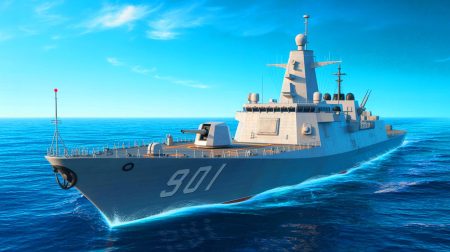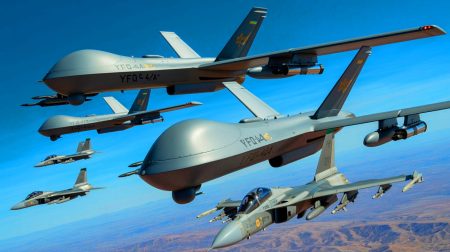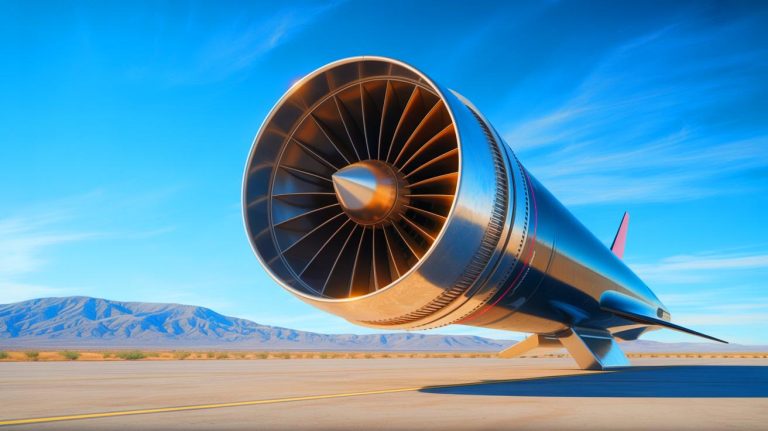| IN A NUTSHELL |
|
The realm of hypersonic travel has always fired the imagination of aerospace enthusiasts and defense strategists alike. With the recent achievements of Venus Aerospace, a Houston-based startup, the US is witnessing a new dawn in high-speed aviation. Their successful test of the Rotating Detonation Rocket Engine (RDRE) marks a significant leap forward, promising to revolutionize air travel and defense capabilities. This breakthrough not only underscores America’s commitment to closing the hypersonic technology gap with global competitors but also highlights the potential for future commercial applications, such as reducing travel time between continents to mere hours. How will this innovation shape the future of transportation?
Revolutionizing Aerospace with the RDRE
The Rotating Detonation Rocket Engine (RDRE) represents a pivotal advancement in aerospace technology. Developed by Venus Aerospace, the RDRE has been in the making since the 1980s. However, it wasn’t until recently that this groundbreaking technology took flight, marking the first-ever US flight test of such an engine. This engine is a marvel of engineering, offering exceptional efficiency and thrust while being more compact and affordable than traditional rocket engines.
Venus’s RDRE is designed to be both scalable and practical, addressing the needs of defense and commercial systems. Its ability to transition from runway takeoff to speeds exceeding Mach 6 without the need for rocket boosters is a testament to its versatility. Such capabilities make it a prime candidate for future vehicles that could potentially transport passengers from Los Angeles to Tokyo in under two hours. The successful demonstration of the RDRE at Spaceport America in New Mexico has set the stage for more ambitious projects, including the development of the Stargazer M4, a Mach 4 reusable passenger aircraft.
Innovators Leading the Hypersonic Charge
Venus Aerospace is not the only player in the hypersonic arena. Across the United States, several startups are racing to develop cutting-edge hypersonic technologies. Companies like Anduril Industries are making strides with their 21-inch hypersonic solid rocket motor, which aims to augment the US Navy’s missile capabilities with speeds between Mach 5 and 7. Meanwhile, Castelion and Ursa Major are also contributing to the defense sector with their affordable, mass-produced hypersonic weapons and engines, respectively.
In Georgia, Hermeus is working on the Quarterhorse, a hypersonic aircraft designed to reach Mach 5. Their efforts extend to the Halcyon, an ambitious project to create a hypersonic passenger jet capable of flying from London to New York City in just 90 minutes. In a significant move, the Pentagon has contracted Kratos Defense & Security Solutions to develop hypersonic testing capabilities, further solidifying the US’s commitment to hypersonic advancement. These efforts collectively fortify national security and maintain the US’s strategic edge in global aerospace and defense.
Understanding Rotating Detonation Technology
The science behind the RDRE is as fascinating as its potential applications. Rotating detonation involves a complex process of continuous detonation waves that travel around a circular channel. This method offers a significant improvement over traditional combustion engines, providing higher thermodynamic efficiency and thrust-to-weight ratios. The RDRE’s compact design and ability to operate under real-world conditions set it apart as a transformative technology for both military and commercial aerospace applications.
One of the RDRE’s standout features is its integration with Venus Aerospace’s proprietary VDR2 air-breathing detonation ramjet. This combination allows aircraft to maintain hypersonic speeds without relying on rocket boosters, making the technology more practical and sustainable. The ongoing efforts to scale this technology for use in various applications reflect the immense potential of detonation-based propulsion systems in redefining high-speed travel.
Beyond the Horizon: The Future of High-Speed Travel
The implications of Venus Aerospace’s achievements extend far beyond the realm of national defense. The prospect of reducing intercontinental travel times to under two hours could transform global connectivity, impacting industries ranging from tourism to international business. As Venus Aerospace and other innovators continue to refine and test their technologies, the dream of hypersonic commercial flight inches closer to reality.
While the technical challenges remain significant, the progress made so far is a testament to human ingenuity and determination. The RDRE and similar advancements hold the promise of not only enhancing national defense capabilities but also revolutionizing how we perceive distance and time in air travel. As we stand on the brink of a new era in aerospace, one must ask: How will these innovations reshape the way we connect with the world and each other?
Did you like it? 4.7/5 (20)






Wow, Los Angeles to Tokyo in under two hours? Sign me up! ✈️
Is this technology environmentally friendly? Seems like a lot of fuel would be used. 🤔
Can I just get my pizza delivered with one of these jets? 🍕
Interesting! But how safe is traveling at Mach 6?
Finally, the future is here! Can’t wait to see these in action. 🚀
Does anyone else think this sounds like something out of a sci-fi movie? 🤖
How much would a ticket cost for these hypersonic flights?